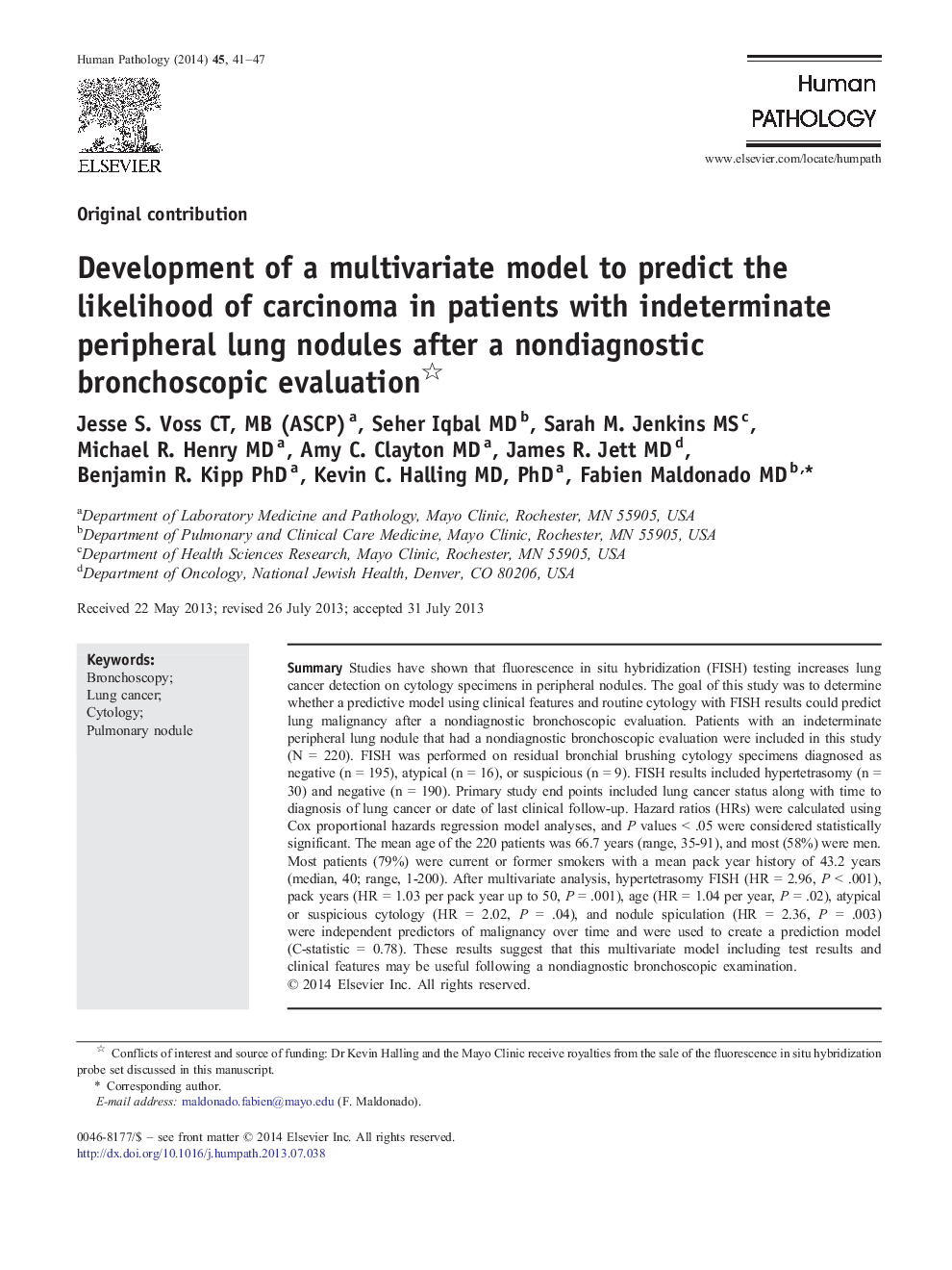| Article ID | Journal | Published Year | Pages | File Type |
|---|---|---|---|---|
| 4133413 | Human Pathology | 2014 | 7 Pages |
SummaryStudies have shown that fluorescence in situ hybridization (FISH) testing increases lung cancer detection on cytology specimens in peripheral nodules. The goal of this study was to determine whether a predictive model using clinical features and routine cytology with FISH results could predict lung malignancy after a nondiagnostic bronchoscopic evaluation. Patients with an indeterminate peripheral lung nodule that had a nondiagnostic bronchoscopic evaluation were included in this study (N = 220). FISH was performed on residual bronchial brushing cytology specimens diagnosed as negative (n = 195), atypical (n = 16), or suspicious (n = 9). FISH results included hypertetrasomy (n = 30) and negative (n = 190). Primary study end points included lung cancer status along with time to diagnosis of lung cancer or date of last clinical follow-up. Hazard ratios (HRs) were calculated using Cox proportional hazards regression model analyses, and P values < .05 were considered statistically significant. The mean age of the 220 patients was 66.7 years (range, 35-91), and most (58%) were men. Most patients (79%) were current or former smokers with a mean pack year history of 43.2 years (median, 40; range, 1-200). After multivariate analysis, hypertetrasomy FISH (HR = 2.96, P < .001), pack years (HR = 1.03 per pack year up to 50, P = .001), age (HR = 1.04 per year, P = .02), atypical or suspicious cytology (HR = 2.02, P = .04), and nodule spiculation (HR = 2.36, P = .003) were independent predictors of malignancy over time and were used to create a prediction model (C-statistic = 0.78). These results suggest that this multivariate model including test results and clinical features may be useful following a nondiagnostic bronchoscopic examination.
